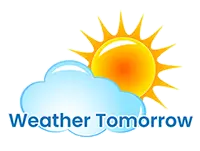Weather forecasts have become an integral part of our daily lives. Whether we’re planning a weekend getaway, deciding what to wear, or preparing for potential storms, we rely on these forecasts to make informed decisions. But have you ever wondered just how accurate these weather predictions are? Let’s learn about weather forecasting, exploring the intricacies of modern meteorology to answer the burning question: How accurate are weather forecasts?
The Science Behind Weather Forecasting
At the heart of accurate weather forecasting lies a complex blend of science and technology. Meteorologists, armed with cutting-edge tools and vast amounts of data, work tirelessly to provide us with timely and reliable forecasts. Let’s take a closer look at the elements that make this possible:
1. Data Collection and Analysis
The foundation of weather forecasting rests on data, and lots of it. Meteorological agencies worldwide gather information from a vast network of weather stations, satellites, weather balloons, and ocean buoys. This constant stream of data includes temperature, humidity, wind speed and direction, air pressure, and more.
2. Computer Models
In today’s digital age, meteorologists rely on advanced computer models to simulate and predict atmospheric conditions. These models process the massive amounts of data collected and generate forecasts based on complex mathematical equations that describe how the atmosphere behaves.
3. Observation and Experience
While technology has revolutionized weather forecasting, human expertise remains invaluable. Experienced meteorologists add a critical layer of interpretation to the data and computer-generated models. Their understanding of local conditions, climate patterns, and historical data helps fine-tune forecasts for greater accuracy.
Factors Influencing Forecast Accuracy
While the tools and methods employed in meteorology have come a long way, several factors still influence the accuracy of weather forecasts:
1. Atmospheric Complexity
The Earth’s atmosphere is a dynamic and intricate system, with countless variables interacting at any given moment. Minor changes in one part of the atmosphere can lead to significant variations in weather patterns. Predicting these changes with pinpoint accuracy remains a challenge.
2. Influence of Climate Change
Climate change introduces an additional layer of complexity to weather forecasting. Alterations in climate patterns can result in more frequent and severe weather events, making it challenging to anticipate and predict their exact impact.
Advancements Enhancing Forecast Accuracy
Meteorological agencies worldwide are continually working to improve forecast precision. Some key advancements include:
1. Supercomputing Power
Today’s weather models are run on powerful supercomputers that can process vast amounts of data in real-time. This computational muscle allows for more detailed and timely forecasts.
2. Global Data Sharing
Meteorological agencies worldwide collaborate and share data, enabling a more comprehensive understanding of global weather patterns. This international cooperation enhances forecasting accuracy, especially for extreme weather events.
The Practical Applications of Accurate Forecasts
Accurate weather forecasts have far-reaching implications across various sectors:
1. Agriculture
Farmers rely on weather forecasts to make critical decisions about planting, harvesting, and irrigation. Accurate predictions help optimize crop management, resulting in higher yields and reduced resource wastage.
2. Disaster Preparedness
Timely and precise forecasts are vital for disaster preparedness and response. They enable governments and emergency services to evacuate at-risk areas, stockpile essential supplies, and plan rescue operations effectively.
The Future of Weather Forecasting
As technology continues to advance, the future of weather forecasting holds exciting prospects:
1. Artificial Intelligence
Machine learning and artificial intelligence are increasingly being integrated into weather prediction models. These technologies can analyze vast datasets and identify complex patterns that might elude traditional forecasting methods.
2. Space-Based Observations
Satellites equipped with advanced sensors provide real-time data on atmospheric conditions. These space-based observations offer unparalleled insights into global weather patterns.
Common Questions About Weather Forecasts
- Are Weather Forecasts Getting More Accurate?
Yes, weather forecasts have significantly improved over the years, thanks to advancements in technology, data collection, and modeling techniques.
- Why Do Forecasts Differ Between Sources?
Different forecasting agencies may use slightly different models and data sources, leading to variations in predictions. However, these differences are typically minimal.
- How Can I Interpret a Weather Forecast?
Understanding the basics of weather forecasting, such as reading symbols and interpreting terms like “partly cloudy” or “chance of precipitation,” can help you make sense of a forecast.
- Can Weather Forecasts Predict Extreme Events?
While forecasts can predict the likelihood of extreme events, such as hurricanes or heatwaves, their precise intensity and impact can be challenging to forecast accurately.
- What Are the Limitations of Long-term Forecasts?
Long-term forecasts (beyond a week) are less accurate than short-term forecasts due to the increased complexity of predicting atmospheric conditions over extended periods.
- How Often Are Forecasts Updated?
Weather forecasts are typically updated multiple times a day to account for changing conditions.
Weather Prediction
While predicting the weather remains a complex task, today’s forecasts are remarkably accurate, thanks to advancements in technology, global collaboration, and the dedication of meteorologists worldwide. The practical applications of accurate weather forecasts are vast and extend beyond our daily lives, impacting agriculture, disaster management, and more.









